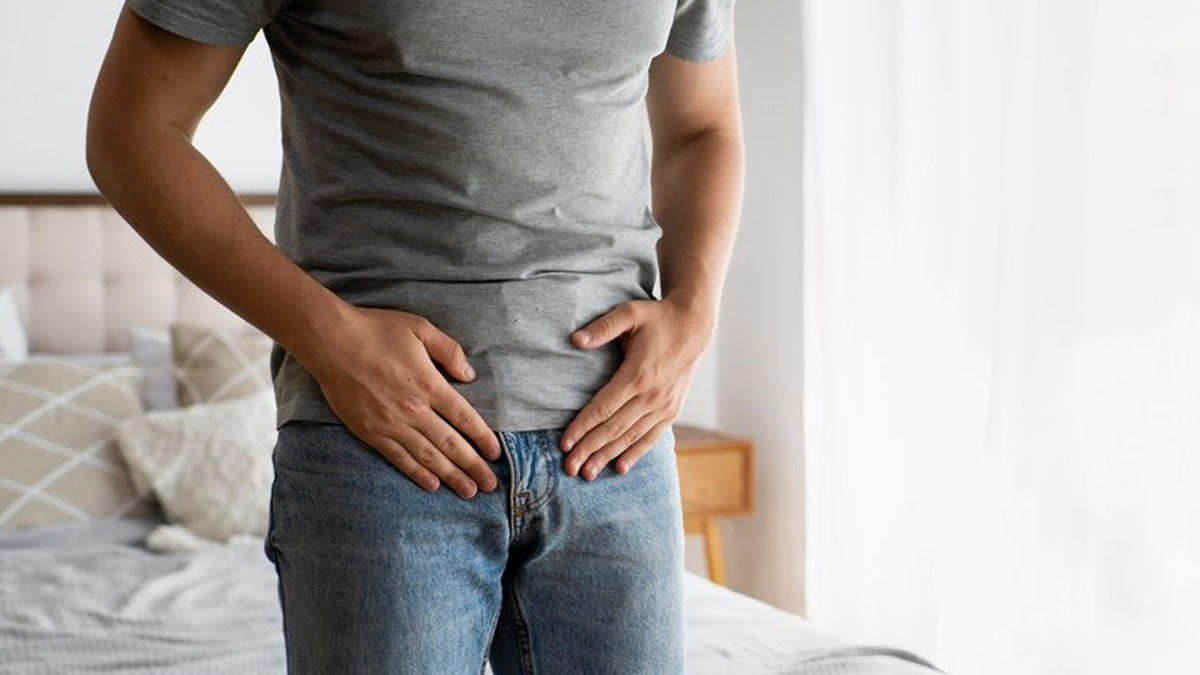
Overactive bladder (OAB) is a condition characterised by frequent and urgent urination, often accompanied by a sudden and intense need to urinate. This condition can affect anyone, but studies suggest that OAB may be more common in men, particularly older men. While women are often associated with bladder issues due to factors like childbirth and menopause, men are not immune to this condition, which can significantly affect their quality of life.
Table of Content:-
To understand the condition and why it is more common in men, OnlyMyHealth interacted with Dr Shrinivas R P, Consultant – Urology at Manipal Hospital, Whitefield, Bengaluru. He explains, “Overactive bladder is characterised by increased bladder activity, where the normal activity becomes more intense and severe, leading to increased urinary frequency both during the day and, sometimes, at night. It is also accompanied by a sensation of severe urgency to urinate with very little warning time, and some people may experience urinary leakage before reaching the washroom.”

OAB is often seen as a condition affecting older men, but it can also occur in younger individuals due to various lifestyle factors. The condition manifests as an urgent and uncontrollable need to urinate, which can be distressing and inconvenient, affecting daily routines and sleep patterns.
Why Overactive Bladder is More Common in Men
Overactive bladder can occur in both men and women, but the incidence among men has been rising. One of the primary reasons for this, according to studies, is related to prostate health. Dr Shrinivas notes, “In older men, one common cause is prostate enlargement, which obstructs urinary flow and indirectly causes bladder overactivity.” The prostate gland, which surrounds the urethra, tends to enlarge with age, a condition known as benign prostatic hyperplasia (BPH). This enlargement can obstruct normal urinary flow, leading to incomplete bladder emptying and increased bladder contractions, resulting in the symptoms of OAB.
Also read: Why Weak Bladder Control Is More Common In Postmenopausal Women

However, prostate issues are not the only culprits. Dr Shrinivas highlights that younger men can also experience overactive bladder without prostate blockage. “This is mainly due to modern lifestyle factors in the form of smoking, exposure to environmental toxins, high coffee and alcohol intake, and a sedentary lifestyle,” he explains. According to the National Institute of Health, high caffeine and alcohol consumption irritate the bladder lining, increasing the urgency and frequency of urination. Similarly, smoking and environmental toxins can affect bladder function, while a sedentary lifestyle may weaken pelvic floor muscles, exacerbating OAB symptoms.
Additionally, Dr Shrinivas mentions, “There is also a surge in this information era where people read about any of their illnesses on the internet, which contributes to anxiety about health issues, which can also affect urinary frequency as a response to stress.” This increased awareness and anxiety can lead to heightened sensitivity towards bladder sensations, making men more likely to experience and report symptoms of OAB.
Also read: Urologist Insights: How To Strengthen Bladder Control In Older Adults
Managing Overactive Bladder in Men

OAB can be triggered by simple conditions like infections or stress, but symptoms sometimes persist, requiring medical intervention. “Initially, an overactive bladder can be triggered by simple conditions like infections or stress, but sometimes the symptoms persist for a long time, eventually requiring medication and further investigation,” says Dr Shrinivas.
Treatment options include lifestyle changes such as reducing caffeine and alcohol intake, quitting smoking, regular exercise, and pelvic floor exercises like Kegels, which can strengthen the muscles controlling the bladder. In more severe cases, medications or minimally invasive procedures might be necessary.
Conclusion
While OAB is often overlooked as a men’s health issue, it’s a condition that significantly impacts many men, particularly as they age. Understanding the risk factors, recognizing the symptoms, and seeking appropriate treatment can help manage OAB effectively, improving quality of life. With expert guidance from urologists like Dr Shrinivas, men can take proactive steps to manage this common but often misunderstood condition.
Also watch this video
How we keep this article up to date:
We work with experts and keep a close eye on the latest in health and wellness. Whenever there is a new research or helpful information, we update our articles with accurate and useful advice.
Current Version